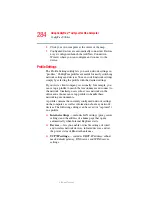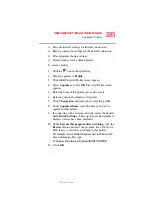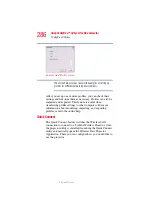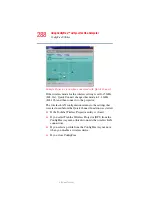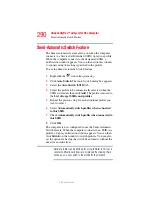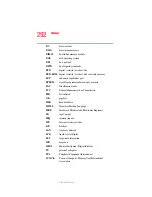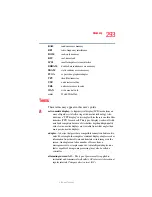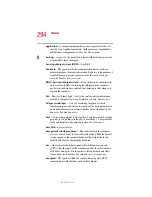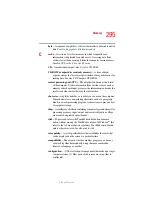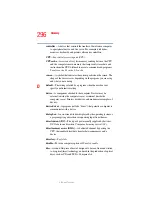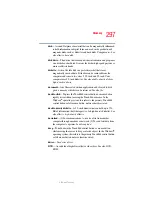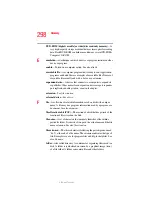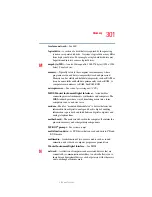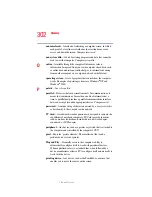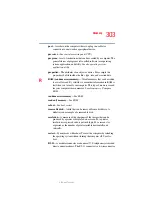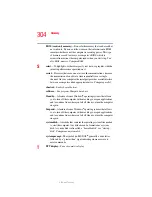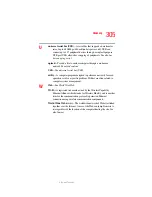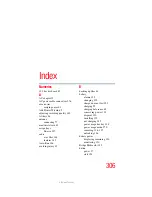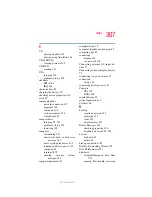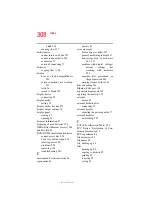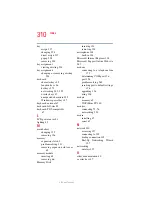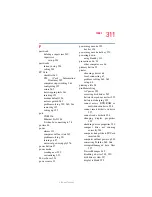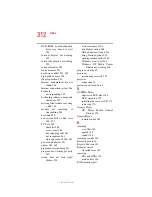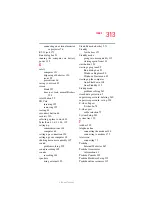
298
Glossary
5.375 x 8.375 ver 2.3
DVD-ROM (digital versatile [or video] disc read-only memory)
—A
very high-capacity storage medium that uses laser optics for reading
data. Each DVD-ROM can hold as much data as several CD-ROMs.
Compare
CD-ROM.
E
emulation—
A technique in which a device or program imitates another
device or program.
enable
—To turn on a computer option. See also
disable
.
executable file
—A computer program that is ready to run. Application
programs and batch files are examples of executable files. Names of
executable files usually end with a .bat or .exe extension.
expansion device
—A device that connects to a computer to expand its
capabilities. Other names for an expansion device are port expander,
port replicator, docking station, or network adapter.
extension
—See
file extension
.
external device
—See
device.
F
file
—A collection of related information, saved on disk with a unique
name. A file may be a program, information used by a program, or a
document. See also
document.
file allocation table (FAT)
—The section of a disk that keeps track of the
location of files stored on the disk.
file name
—A set of characters that uniquely identifies a file within a
particular folder. It consists of two parts: the actual name and the file
name extension. See also
file extension
.
file extension
—The three characters following the period (pronounced
“dot”) at the end of a file name. The extension indicates the type of
file. Examples are .exe for program files and .hlp for help files. See
also
file name.
folder
—Also called directory. A container for organizing files saved to a
disk. A folder is symbolized on screen by a graphical image (icon)
of a file folder. A folder can contain files and other folders.

